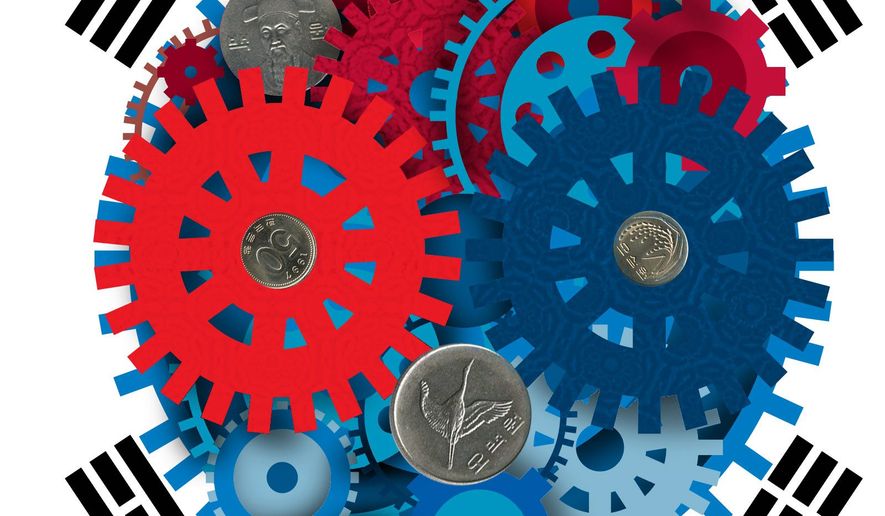OPINION:
Seoul, South Korea | By the time you read this, South Korea will have just elected a new president. There will be a peaceful transfer of power, coming after the previous president was impeached for corruption, but all done in proper democratic way. Few would have bet after the end of the Korean War, more than 60 years ago, that South Korea would now be a rich, developed, democratic country.
This city of 10 million has the fourth-highest gross domestic product (GDP) of any city in the world, only being outdone by Tokyo, New York and Los Angeles. It is both a very old city with a history going back more than 2,000 years, and a very new city. During the Korean War (1950-53) the city changed hands several times and was largely destroyed, What one sees today is almost an all new city, filled with international-style, modern glass-wall skyscrapers with at least one well over 100 stories.
Despite almost weekly unpredictable noises from the ruler of North Korea, a country whose border is only 30 miles to the north of the city of Seoul — about the distance from the White House to Washington Dulles International Airport — life and construction goes on in a normal way. Those who are putting up all of the money to continue building the superstructures that give Seoul its ever-changing skyline have an obvious (or irrational) confidence that all of this magnificence is not going to be nuked or shelled by the North.
In 1960, South Korea and North Korea were similar in their poverty. Now, 50-plus years later, South Korea has a per-capita income more than 20 times that of North Korea, at approximately $38,000 per year, which is higher than that of Spain or Italy. South Koreans have gone from a per-capita income in 1970 that was about 10 percent of the average American to almost 70 percent today.
From many vantages in this city, one can look out a window or stand on a high hill and look down on one people under two systems. Koreans in both the North and South come from the same genetic stock, speak the same language, and occupy adjoining pieces of land with much of the same topography and limited natural resources.
North Korea is the ultimate consequence of socialism, which always contains the seeds of its own destruction. Socialism goes against human nature, requiring its government to become increasingly authoritarian — North Korea being Exhibit A. Or socialism collapses with or without violence, from the inherent rot caused by a nonfunctioning price system — the Soviet Union being Exhibit B. Or socialism is voted out of power (where it has not yet destroyed all of democracy), and the price system and private ownership are restored, the United Kingdom under Margaret Thatcher being Exhibit C.
By the 1960s, South Korea’s leadership and people concluded that survival depended on economic growth and an increasingly democratic political system. They understood, being land-poor with a large population, that rapid growth required exporting large amounts of goods and services. Exports went from near zero to more than 50 percent of GDP today, with China replacing the United States as Korea’s biggest market. Imports also grew nearly as rapidly. The tax and regulatory system greatly favored companies that exported and developed heavy industries, such as shipbuilding and automobile manufacturing. Many of these earlier subsidies and tax and regulatory incentives have now been reduced, giving the country a more balanced and internationally compliant system.
A strong emphasis was placed on education, particularly science, technology, engineering and mathematics subjects. Korea now has one of the best-educated populations and skilled work forces in the world. It has also increasingly improved the rule of law, and strengthened and stabilized the currency, leading to low inflation. Levels of taxation and government spending are slightly lower than in the United States and most other developed nations, but still above the optimum level. Koreans have exhibited more budget discipline than the Europeans, the Japanese and the Americans, (a low bar), giving them a very manageable level of public debt.
While economic growth per year averaged more than 9 percent from 1963 to 1990, it has now slowed down and last year was only 2.8 percent (still above the United States and most other developed countries), but nevertheless a sharp drop from earlier decades. There is too much unneeded and counterproductive regulation, including the lack of ease of creating new businesses, barriers to imports and inward foreign investment.
By any measure, South Korea has been a great success, but probably not as much as it could have been or can be if it followed more of a classic free trade and more limited-government model as practiced by Hong Kong and others. The country is increasingly exhibiting the disease of most other rich, developed democracies by allowing itself to be slowly seduced into the promise of more government services and attendant regulation, rather than the tougher and more competitive policies that created the wealth. Will South Korea avoid the stagnation of Japan and much of Europe? The jury is still out.
• Richard W. Rahn is chairman of Improbable Success Productions and on the board of the American Council for Capital Formation.




Please read our comment policy before commenting.